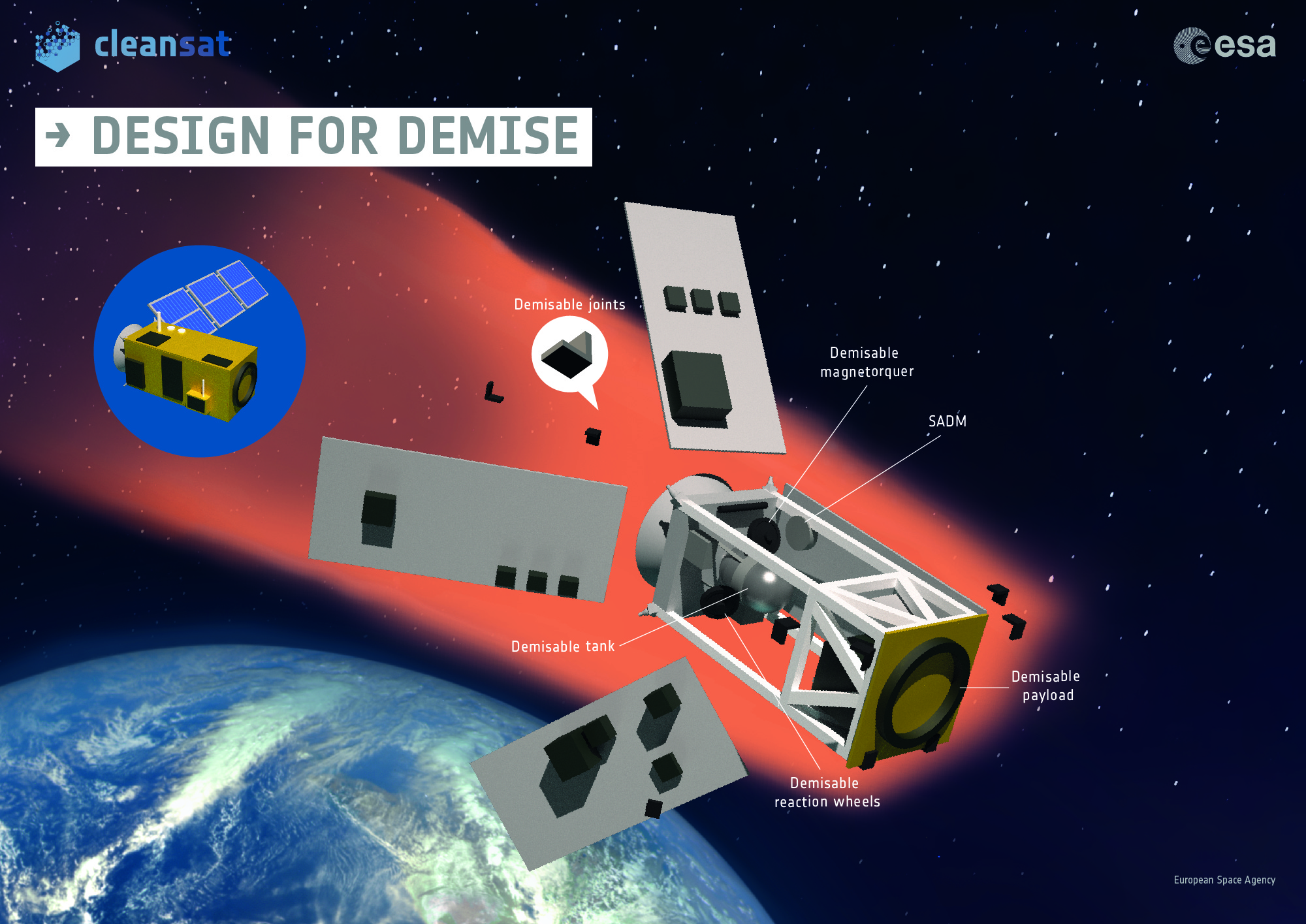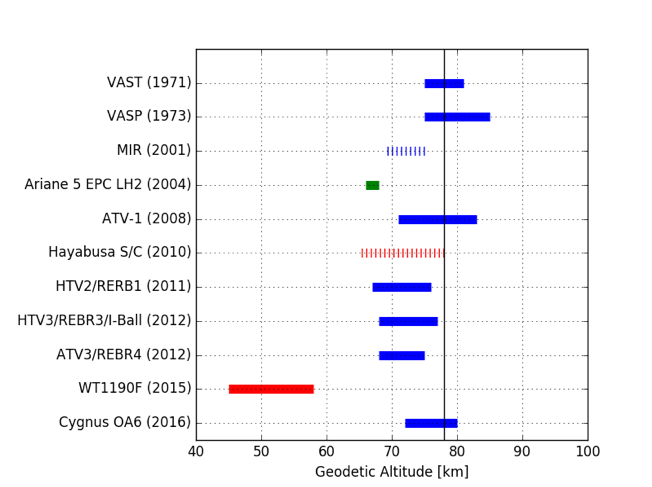What goes up into space, may come back again, down to Earth. And sometimes there might actually be an upside to finding a fallen spacecraft in your backyard… as the basis of a nice story to tell your friends or as publicity for your region…
Hi @elonmusk
Look at what we found from @SpaceX on the foreshore of #Quemenes, the island where we livre in Brittany (France)! What is it ?
By the way will you send an electric tractor in space ? We need one ! 😉 #space #rocket #riddle #sea pic.twitter.com/7Uw3dQzOZ3— Ferme de Quéménès – Île d’Iroise (@Quemenes_Iroise) 13 avril 2018
As we’ve previously told you in this blog, with the CleanSat project, ESA will prevent the creation of space debris in the future. By extension this means that we want to reduce the amount of debris landing back on the Earth’s surface.
An attractive solution to reduce the risk of casualties on ground resulting from the uncontrolled re-entry of a spacecraft is offered by Design for Demise.

CleanSat: Design for Demise
This refers to the intentional design of space system hardware so that it will burn up – or ‘ablate’ – during an atmospheric reentry in order to reduce the number of surviving parts that reach the ground and the associated casualty risk.
To better understand why we are looking at building satellites that would break apart, read: why would we build a satellite that breaks apart. You will also learn in this post which material may survive re-entry and which ones are going to burn up more rapidly. On top of this, you will find some explanations on how the break-up can be achieved. And this is a true challenge.
Design for Demise is a recent concept, therefore important knowledge gaps still exist. The understanding of how spacecraft break apart during reentry is extremely complex due to the complex thermo-mechanical environment that the satellite faces over the course of reentry. If you wish to dig more into the topic, check this post: modelling a satellites fiery fall to earth.
Furthermore, there are limited observations and in-situ measurements available, and it is difficult –sometimes even impossible – and costly to reliably reproduce reentry conditions on Earth. In order to reduce the uncertainty of material properties, ESA has run several activities. More details here: how do materials behave during atmospheric re-entry.
[youtube https://www.youtube.com/watch?v=MbzfpXKbPWY]
Hence, a free flight experiment is of paramount importance to understand how spacecraft and launchers break apart during reentry.
One of the main uncertainties of the demise process are fragmentation events. In the current re-entry simulation models these are modelled either as a thermally driven process or simply as an event taking place at a predefine altitude (often 78km). However, this uncertainty can inject very important errors in the estimation of the casualty risk.
To better evaluate our models, ESA is launching a new activity soon to be kicked-off with Fluid Gravity, Belstead Research, IRS and DLR: “the re-entry break-up experiment assessment”.
Related posts:






Discussion: no comments